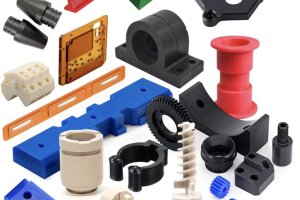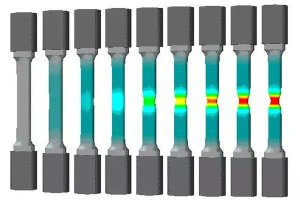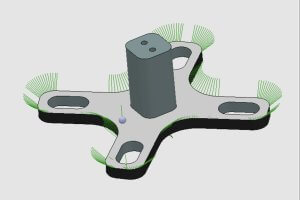Stainless steel is a go-to material in industries ranging from aerospace to medical devices, thanks to its corrosion resistance, strength, and aesthetic appeal. However, these same properties can make it a challenge to machine, especially when precision and efficiency are paramount. For buyers sourcing CNC machined parts made from stainless steel, understanding the complexities of machining this material is crucial to selecting the right supplier.
This comprehensive guide aims to equip buyers with the knowledge they need to navigate the challenges of machining stainless steel. We’ll delve into the types of stainless steel, the machining difficulties they present, and the best practices for tool selection and machining techniques. By the end of this article, you’ll be better prepared to evaluate suppliers and ensure your stainless steel components meet the highest standards.
Understanding Stainless Steel
Stainless steel is an alloy that typically contains at least 12% chromium, which gives it its characteristic corrosion resistance. Depending on its composition, stainless steel can be categorized into several types, each with unique properties that affect its machinability:
- Martensitic Stainless Steel: Contains 12-18% chromium and 0.1-0.5% carbon. This type is hardenable by heat treatment, which makes it strong and wear-resistant but also challenging to machine due to its brittleness and tendency to work-harden. Common grades include 1Cr13, 2Cr13, and 3Cr13.
- Ferritic Stainless Steel: Composed primarily of chromium (12-30%) and is not hardenable by heat treatment. It has good corrosion resistance and machinability but tends to form continuous chips that can complicate machining. Grades include 0Cr13 and 1Cr17.
- Austenitic Stainless Steel: The most commonly used type, with 12-25% chromium and 7-20% nickel. It is non-magnetic, highly corrosion-resistant, and has excellent mechanical properties but is prone to work-hardening and poor chip formation, making it difficult to machine. Common grades include 304 and 316.
- Duplex Stainless Steel: Combines the properties of austenitic and ferritic stainless steels, offering higher strength and improved corrosion resistance. However, it’s even more challenging to machine than austenitic stainless steel due to the presence of hard, brittle intermetallic phases.
- Precipitation-Hardening Stainless Steel: Contains elements like aluminum, copper, and titanium that allow it to harden through aging. This type offers high strength and corrosion resistance, but its machinability is similar to that of martensitic stainless steel, making it challenging.
The Challenges of Machining Stainless Steel
Stainless steel’s desirable properties—corrosion resistance, strength, and toughness—are also what make it difficult to machine. Here are some of the key challenges:
- Work Hardening: Stainless steel tends to harden rapidly during machining, especially austenitic and duplex grades. This increases cutting forces, accelerates tool wear, and can lead to poor surface finishes.
- High Cutting Forces: The material’s toughness requires significant force to cut, leading to increased wear on cutting tools. This is particularly pronounced with austenitic stainless steel, which has a higher elongation compared to other steels.
- Heat Generation: Stainless steel has low thermal conductivity, meaning that the heat generated during machining is not easily dissipated. This results in high temperatures at the cutting zone, which can cause thermal damage to both the tool and the workpiece.
- Poor Chip Control: The high ductility and toughness of stainless steel often result in long, continuous chips that can entangle in the tool, leading to tool damage and poor surface finish.
- Tool Wear: The presence of carbides and other hard phases in stainless steel can lead to significant abrasive wear on cutting tools. Additionally, stainless steel’s affinity for the tool material can cause adhesion, leading to built-up edge formation and further reducing tool life.
- Thermal Expansion: Stainless steel’s high coefficient of thermal expansion can lead to dimensional instability during machining, making it challenging to maintain tight tolerances.
Best Practices for Machining Stainless Steel
To overcome the challenges associated with machining stainless steel, careful consideration must be given to tool selection, cutting parameters, and machining techniques. Here are some best practices:
1. Tool Material Selection
Choosing the right tool material is critical for successful stainless steel machining. The tool material must withstand high cutting forces, resist wear, and handle the heat generated during machining.
- High-Speed Steel (HSS): While traditional HSS tools have lower wear resistance, high-performance HSS alloys containing cobalt, vanadium, or molybdenum can offer better durability. Examples include M42 and M2Al, which provide higher hardness and better heat resistance.
- Cemented Carbide: Carbide tools are preferred for their superior hardness and wear resistance. Grades with additions of tantalum carbide (TaC) or niobium carbide (NbC) are particularly effective. Coated carbide tools with TiAlN or TiAlSi coatings can further reduce adhesion and wear, making them ideal for stainless steel.
- Ceramics: For high-speed operations, ceramic tools made from alumina or silicon nitride can maintain their hardness at elevated temperatures, making them suitable for finishing operations on stainless steel.
- PCBN (Polycrystalline Cubic Boron Nitride): PCBN tools are highly wear-resistant and can withstand extreme temperatures, making them ideal for machining hard stainless steels or for finishing applications.
2. Optimizing Tool Geometry
The geometry of the cutting tool significantly impacts its performance when machining stainless steel. Proper tool geometry can reduce cutting forces, minimize heat generation, and improve chip control.
- Rake Angle: A positive rake angle (15° to 30°) helps reduce cutting forces and promotes smoother chip flow. However, for harder grades of stainless steel, a smaller rake angle may be necessary to increase tool strength.
- Relief Angle: A larger relief angle (8° to 12°) reduces friction between the tool and the workpiece, which is important for managing heat and preventing work hardening.
- Cutting Edge Radius: A larger cutting edge radius (0.4 to 1.2 mm) helps distribute cutting forces more evenly, reducing tool wear and improving surface finish.
- Helix Angle (for end mills): A high helix angle (35° to 45°) improves chip evacuation and reduces the tendency for chip re-cutting, which can improve tool life.
3. Cutting Parameters
Selecting the right cutting parameters is crucial for balancing tool life and machining efficiency when working with stainless steel.
- Cutting Speed: For high-speed steel tools, cutting speeds should be kept low, typically between 12 to 18 m/min. For carbide tools, speeds can be higher, around 40 to 60 m/min. Excessive speeds can lead to rapid tool wear due to the high temperatures generated.
- Feed Rate: Feed rates should be large enough to ensure that the cutting edge moves past the work-hardened layer from the previous cut. Typical feed rates range from 0.15 to 0.4 mm/rev.
- Depth of Cut: The depth of cut should be sufficient to penetrate the work-hardened layer. For roughing, a depth of 2 to 5 mm is common, while finishing operations may use depths of 0.2 to 0.5 mm.
4. Chip Control and Breakage
Controlling chip formation and breakage is critical when machining stainless steel, as long, continuous chips can damage tools and interfere with machining operations.
- Chip Breakers: Use tools with built-in chip breakers to ensure that chips are broken into smaller, more manageable pieces.
- Coolant Usage: Applying a high-pressure coolant can help reduce chip adhesion to the tool and improve chip evacuation, leading to better surface finishes and longer tool life.
5. Using the Right Coolant
The selection of cutting fluids and coolants plays a crucial role in managing the heat generated during stainless steel machining and preventing tool wear.
- Sulfurized Oils: These oils form a protective sulfide layer on the tool surface, reducing friction and improving tool life. They are particularly effective in drilling, tapping, and reaming operations.
- Emulsified Coolants: Emulsions with extreme pressure (EP) additives provide excellent cooling and lubrication, making them ideal for roughing operations.
- Vegetable Oils: For operations like threading and reaming, vegetable oils offer superior lubrication, reducing friction and improving tool life.
- Specialized Lubricants: For particularly difficult operations, such as tapping stainless steel, specialized lubricants like MoS2 paste or graphite powder can be mixed with oil to provide enhanced lubrication.
Data Table: Cutting Parameters for Stainless Steel Machining
| Tool Material | Cutting Speed (m/min) | Feed Rate (mm/rev) | Depth of Cut (mm) | Application Notes |
|---|---|---|---|---|
| High-Speed Steel (HSS) | 12 – 18 | 0.15 – 0.4 | 2 – 5 (Roughing) | Use with high-pressure coolant |
| Cemented Carbide | 40 – 60 | 0.15 – 0.4 | 0.2 – 0.5 (Finishing) | Suitable for higher speeds |
| Ceramic | 60 – 120 | 0.1 – 0.3 | 0.2 – 0.5 | Best for high-speed finishing |
| PCBN | 80 – 200 | 0.1 – 0. |
3 | 0.2 – 0.5 | Ideal for hard stainless steel |
| Coated Carbide | 40 – 60 | 0.15 – 0.4 | 2 – 5 (Roughing) | Use for reduced adhesion |
6. Practical Tips for Machining Stainless Steel
Here are some additional practical tips to help you achieve the best results when machining stainless steel:
- Use Climb Milling: When milling stainless steel, climb milling can help reduce work hardening and tool wear by ensuring that the cutting edge engages with the workpiece material in a more favorable manner.
- Avoid Dwell Time: Do not let the tool remain in contact with the workpiece when not actively cutting, as this can lead to increased work hardening and damage to the cutting edge.
- Optimize Tool Paths: Plan tool paths to minimize the tool’s exposure to previously hardened material, which can help reduce tool wear and improve surface finish.
- Regular Tool Inspection: Due to the aggressive nature of stainless steel machining, regularly inspect tools for wear and replace them before they fail. This proactive approach will help maintain machining efficiency and prevent costly downtime.
- Custom Tooling: Consider custom tooling options if you encounter unique challenges with specific stainless steel grades or part geometries. Custom tools can be designed to optimize chip control, reduce cutting forces, and improve overall performance.
Selecting the Right CNC Machining Supplier
Cracking the code to machining stainless steel requires a deep understanding of the material, the right tools, and optimized machining techniques. As a buyer, selecting a CNC machining supplier who possesses the expertise and equipment to handle stainless steel is crucial. Look for suppliers who:
- Have extensive experience in machining various grades of stainless steel.
- Utilize advanced CNC machinery with high-precision capabilities.
- Implement rigorous quality control processes, including regular tool inspection and maintenance.
- Offer flexibility in tooling and machining techniques to meet specific project requirements.
By choosing a supplier with these capabilities, you can ensure that your CNC machined stainless steel parts meet the highest standards of quality, durability, and precision.
Other Articles You Might Enjoy
- What Material Properties Need to Be Considered When CNC Machining Stainless Steel Flanges?
The CNC machining of stainless steel flanges requires a profound understanding of the material's properties to ensure high-quality, precision outcomes. This article delves into the critical material properties that impact…
- Fast CNC Machining Services for Stainless Steel Prototyping
CNC Machining and Stainless Steel in Prototyping Computer Numerical Control (CNC) machining is a critical process in the manufacturing sector, particularly for prototyping projects. It's an automated method that uses…
- How to Choose a Global CNC Machining Service Provider for Stainless Steel Flanges?
Choosing the right CNC machining service provider for stainless steel flanges is crucial to ensure high-quality products, timely delivery, and cost-effectiveness. This guide will help you understand the key factors…
- How Does CNC Machining Achieve Precision Tolerances in Stainless Steel Parts?
The Importance of Precision Tolerances in Stainless Steel Parts Precision tolerances are the allowable limits of variation in a physical dimension. In CNC machining, particularly for stainless steel parts, achieving…
- Precision CNC Machining of Stainless Steel: Innovations and Best Practices in Aerospace Machining
Introduction: Precision CNC Machining and the Use of Stainless Steel Precision Computer Numerical Control (CNC) machining, a vital technology within the manufacturing industry, uses pre-programmed software to guide machinery towards…
- Stainless Steel vs. Aluminum in CNC Machining: Pros and Cons
CNC Machining: The Role of Stainless Steel and Aluminum Computer Numerical Control (CNC) machining is a groundbreaking method in manufacturing that involves precise computer commands to manipulate and control tools…









